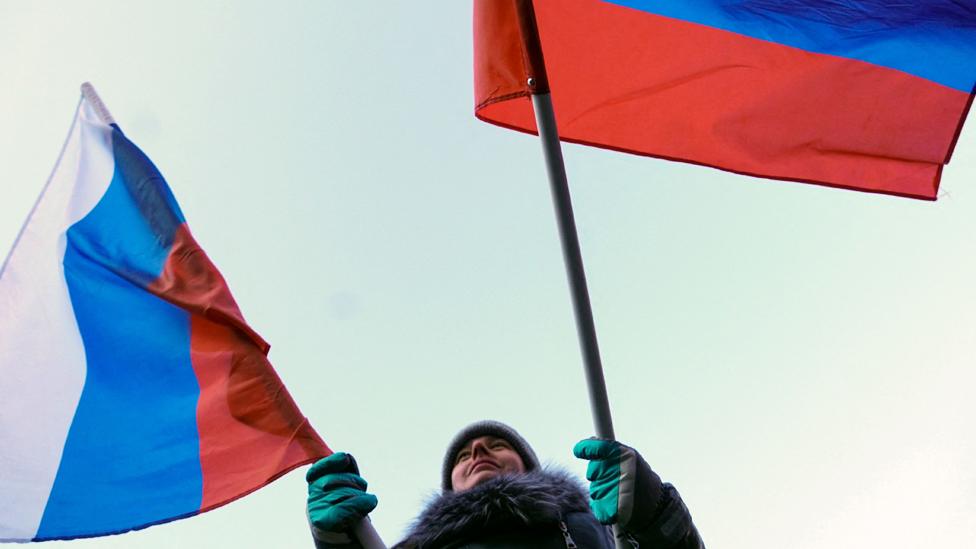Ukraine war: How Russia took the south - and then got stuck
- Published
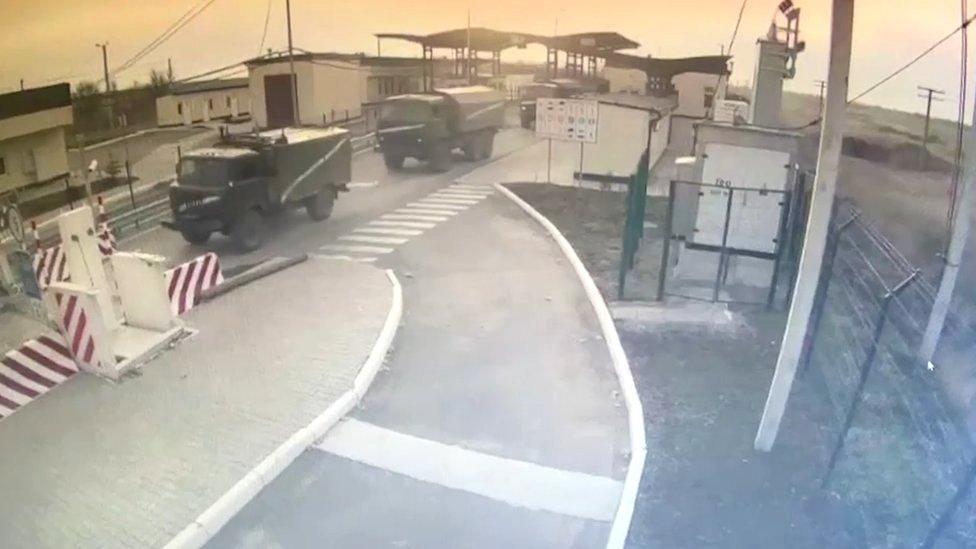
Security cameras captured the moment Russian forces crossed into southern Ukraine from occupied Crimea
When Russia invaded Ukraine a year ago, one of the biggest successes they achieved initially was in southern Ukraine. Within a few days Russian troops attacking from Crimea had seized an area of Ukrainian territory bigger than Switzerland.
Ukrainian authorities are yet to explain what went wrong in the south in those early days. To help uncover what happened, the BBC has spoken to military officers, politicians and activists.
On 22 February 2022 at 19:15, the secretary of Ukraine's security council Oleksiy Danilov received a red folder with secret documents. They warned that the president's life was under imminent threat. Immediately, Mr Danilov contacted the head of the security services, the interior minister, prime minister and President Volodymyr Zelensky himself.
But Ukraine's leadership stopped short of declaring martial law, for now. There was no mobilisation of troops. Just a few weeks before, Ukrainian authorities had described Western warnings of Russian invasion as "manipulation" and called on everyone to remain calm.
Mr Danilov says the government had detailed information about the planned invasion, including its dates. "We expected it on 22 February," he explains, rolling out a secret map of the Kyiv region. Taken from a Russian commander, he says it confirms intelligence reports that Russia's initial plan was to invade two days earlier than they actually did.
"Our goal was to avoid any panic inside the country. So, it was crucial to keep it all secret."

This secret map dating back to 1989 was seized from a Russian commander and shows the attack plan around Kyiv
If the Ukrainian authorities knew so much about Moscow's plans, why were Russian troops able to sweep across the Kherson region in the south so quickly?
A strait and a narrow strip of land separate the Crimean peninsula from the Ukrainian mainland, and they were natural obstacles for Russian troops. So too was the extensive network of irrigation channels in the Kherson region.
Ukrainian forces just needed to destroy all bridges there to slow down the Russian advance. But that did not happen.
Mr Danilov says the authorities are currently investigating this, and until that process is over they cannot give an answer: "But we are not hiding this fact, we are not putting it away in a drawer."


The Chonhar bridge which crosses the strait between Crimea and Kherson had been mined, Ukraine's general staff confirmed after the invasion. But it rejected suggestions that the explosives had been defused, saying Russia's invasion force was 15 times the size of Ukraine's defence.
Critics have argued it was precisely because of that Russian dominance that the bridge should have been destroyed.
It is clear Ukrainian forces were not prepared for a scenario in which Russian troops easily crossed into the southern Kherson region.
As a result, they had to retreat from the region right from the start. As they withdrew, it took two hours for columns of military vehicles and troops to cross the Antonivskiy bridge near Kherson city, according to Senior Lt Yevhen Palchenko, who defended the bridge over the Dnipro river.
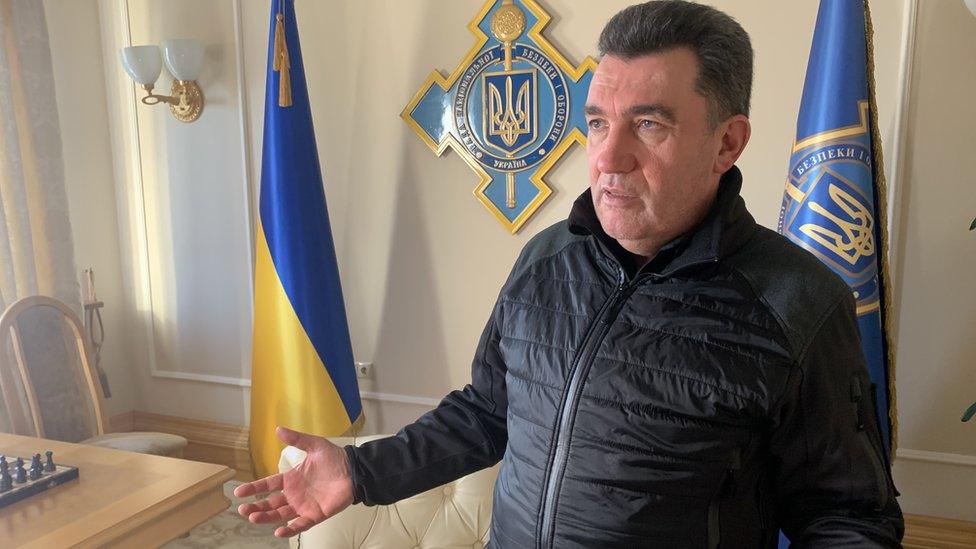
Ukrainian intelligence expected the full-scale invasion two days before it happened, says Oleksiy Danilov
That indicates Ukraine had concentrated a large number of troops near Crimea. But with the bridges still standing, they were quickly outnumbered and outgunned.
"How can you contain their offensive when we had no air defence?" Lt Palchenko explains. "Their fighter jets flew in and dropped a whole bunch of bombs, blowing up everything. We lost a lot of men and equipment there."
Speed was crucial for Russian success. Their tactic was to bypass large cities, encircle them and move on. They planned to take Mykolaiv in two days and Odesa in three days, says Maj Gen Dmytro Marchenko, who was sent to organise Mykolaiv's defence. But the Russian plan ended in failure.
We stopped Russia's forces because the people rose up

When Gen Marchenko arrived, there was still no plan to defend the city. "When I asked where it was, I was told that they still hadn't put together a map," he said.
He took a road map, divided it into four parts and appointed units and commanders responsible for each section. They announced mobilisation and quickly signed up thousands of people. Many of the newcomers had previously served in the army.
They set up anti-tank groups armed with grenade launchers and organised signal posts to warn when Russian tanks approached. In contrast to Kherson, bridges across irrigation channels in the region were destroyed by hastily set up special forces led by MP Roman Kostenko.
Ukrainian troops fought fiercely to slow down the Russian advancement near the Antonivskiy bridge. At midnight on 25 February, Russian forces went on the offensive. Lt Palchenko and his tank battalion were there to stop them.
"My tank took a few hits, and the system was down. So, we had to do everything manually, like in T-34 tanks during World War Two."
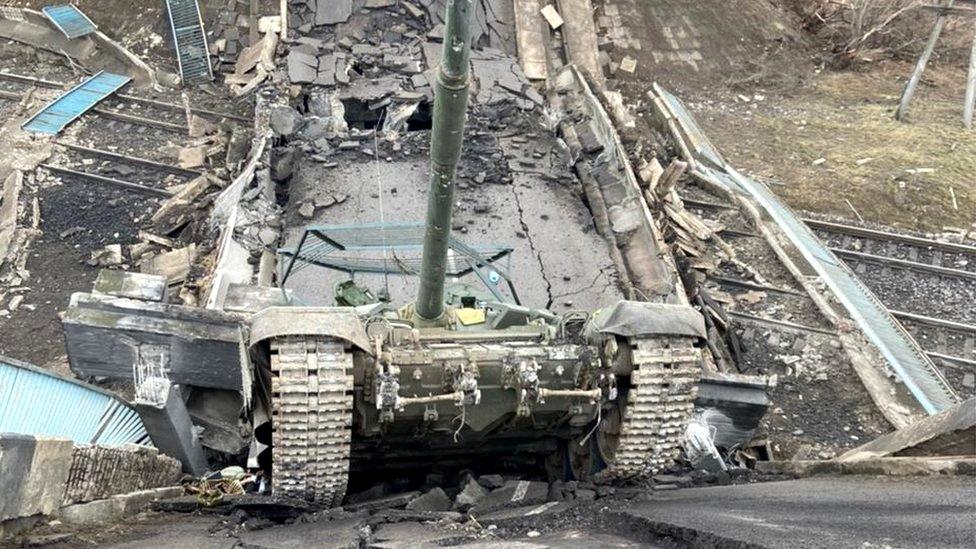
Hastily organised Ukrainian defenders blew up bridges around Mykolaiv, halting the Russian invaders
The Russian forces were overwhelming, so Lt Palchenko and his battalion had to retreat from the bridge. But he went back there several times that night. His tanks covered Ukrainian paratroopers and their task was to prevent Russian troops from crossing the bridge.
The then-23 year-old was later awarded the country's top military honour, Hero of Ukraine.
Their resistance gave Mykolaiv a few more days to prepare its defences. Co-ordination and communication between military and civilian teams meant that the time was used well.
"[Mykolaiv Governor] Vitaliy Kim was amazing at communicating with people to organise help," Maj Gen Marchenko remembers. "We needed excavators - they quickly went and dug [trenches and ditches]. We needed concrete blocks and anti-tank 'hedgehogs' - in half a day, it was all done."
Local citizens constantly monitored the movement of Russian troops and passed co-ordinates to Ukrainian gunners. Ordinary people destroyed armoured vehicles and took prisoners, says Maj Gen Marchenko.
"We stopped Russia's forces because the people rose up," he adds.
Additional reporting by Anna Tsyba.
- Published22 February 2023
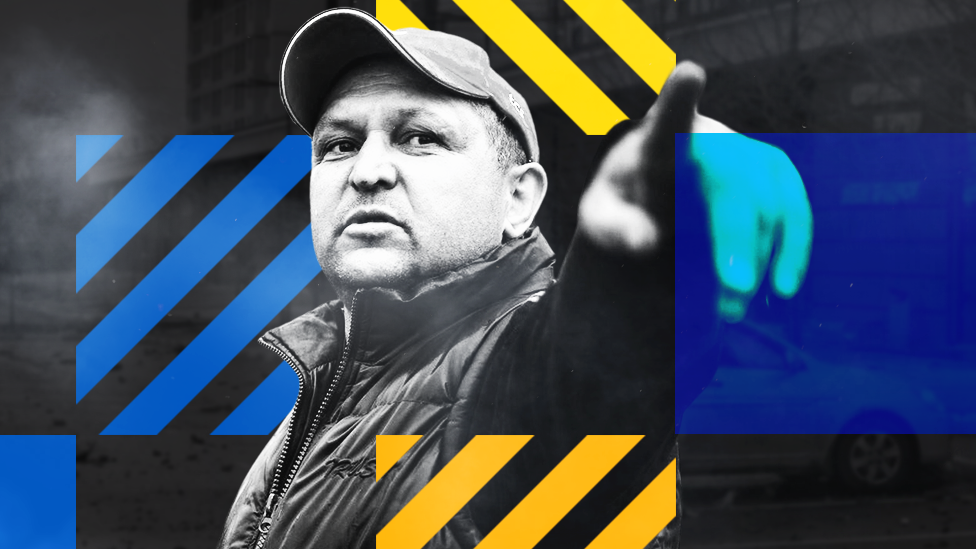
- Published24 February 2023
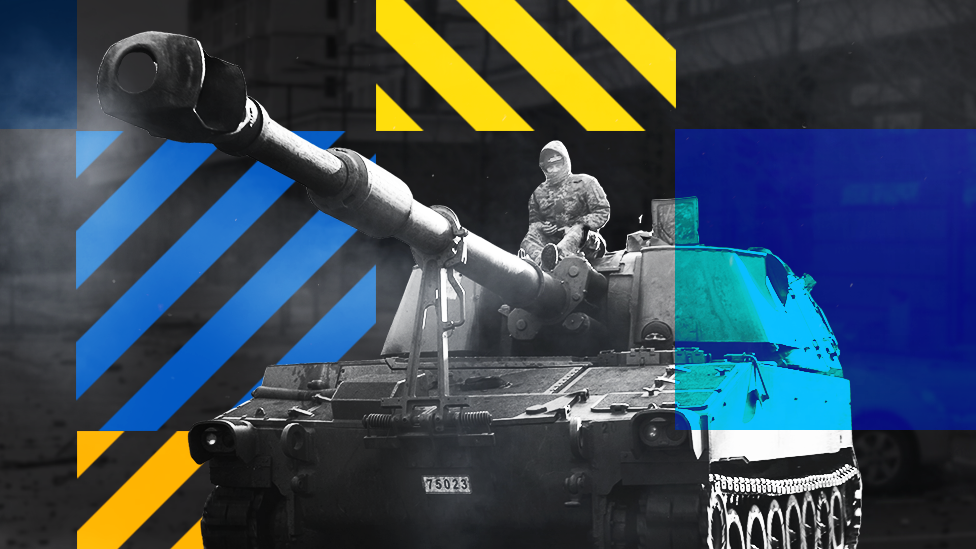
- Published22 February 2023
